The Incredible Tech in 'Black Panther' Is More Realistic Than You Think
In the groundbreaking Marvel film 'Black Panther,' Wakanda mesmerized audiences worldwide with its awe-inspiring futuristic technologies. From the vibranium-powered Black Panther suit to advanced medical advancements, the movie painted a vivid picture of a society on the cutting edge of innovation. While it may seem like pure science fiction, the astounding truth is that many of these futuristic technologies are closer to becoming a reality than we might think.
Today, we decided to take a look at the remarkable technologies showcased in 'Black Panther'. We'll discover how close we are to achieving invisibility cloaks, communication beads, and magnetic levitation trains. Alongside examining the scientific breakthroughs that are propelling us forward, we'll also explore the potential impact of these advancements on various facets of our lives. Scroll down to see this captivating journey as we uncover the fascinating intersection between imagination and reality, where the futuristic technologies showcased in 'Black Panther' find themselves inching ever closer to our everyday lives.
#1. "Black Panther": Shuri's magnet-powered subway
 Source: Marvel Studios
Source: Marvel Studios
The high-speed magnetic levitations subway that runs through Wakanda's vibranium mine got the most screen time in the movie. Like most of the technology in Wakanda, the magnetic levitation (or maglev) rail system was created by Shuri, King T'Challa's teenage sister, and Wakanda's very own Tony Stark equivalent.
Although Oakland, California native and "Black Panther" director Ryan Coogler has claimed in interviews that the Bay Area Rapid Transit (or BART) provided some inspiration for the design of the fictional subway, you couldn't tell by comparing the two rail systems' innovation, speed, or efficiency.
Real Life: Elon Musk's Hyperloop
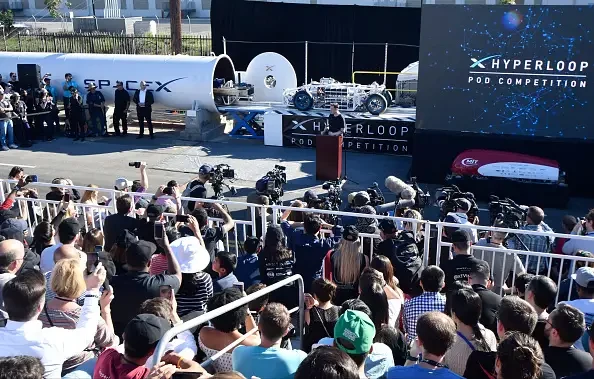 Source: GENE BLEVINS/AFP/Getty Images
Source: GENE BLEVINS/AFP/Getty Images
#2. "Black Panther": Remote piloting
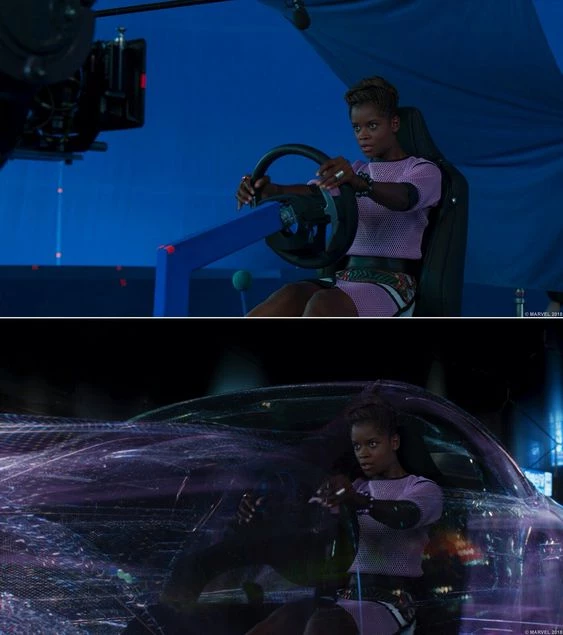 Source: Marvel Studios
Source: Marvel Studios
In the movie, Shuri and CIA agent Everett Ross are both seen driving a car and flying a plane, from a remote location.
They are able to see the view out of each vehicle, as well as touch and operate the controls, just as if they were actually in the driver's seat, using a recurrent piece of Wakandan technology known as a Kimoyo bead.
Real Life: Drones with a first-person view
 Source: Getty Images / Mathias Kniepeiss
Source: Getty Images / Mathias Kniepeiss
Many consumer-use drones are outfitted with virtual reality (VR) headsets that let the remote pilot view what the drone camera sees in-flight, also known as a first-person view. The most well-known application of this technique is in drone racing, in which participants race high-speed quadcopter drones through a series of challenges.
The drone pilots "see what the drone sees" through the drone's camera viewfinder while wearing VR headsets to execute the quickest, sharpest turns possible. The technology demonstrated in "Black Panther," in which the pilot/driver was completely surrounded by a real-time simulation of the environment without the use of a headset, is obviously not nearly as immersive or as impressive as current VR platforms, but it's still pretty cool.
#3. "Black Panther": Vibranium
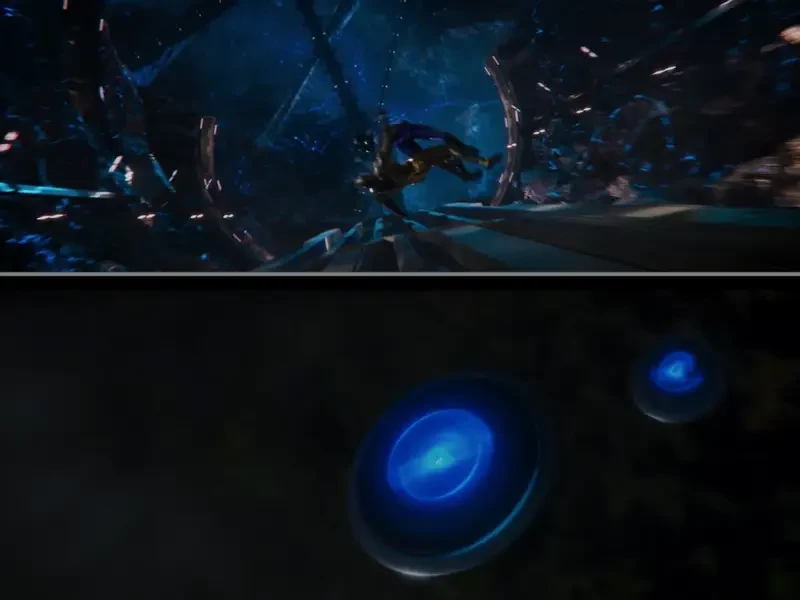 Source: Marvel Studios
Source: Marvel Studios
The strongest most resilient metal on Earth exists in the Marvel Cinematic Universe as vibranium. According to legend, a sizable meteorite chock full of vibranium crashed-landed in Wakanda, and the rest of the world has a great desire for it. In Wakanda, the made-up substance is used to create various technological items like vehicles, weapons, and Captain America's shield.
Additionally, it is sewn into Black Panther's armor, making it bulletproof and giving T'Challa the power to absorb the energy from blows he receives and release it when it's necessary. Still, we'll cover that in more detail later in the list.
Real life: Graphene
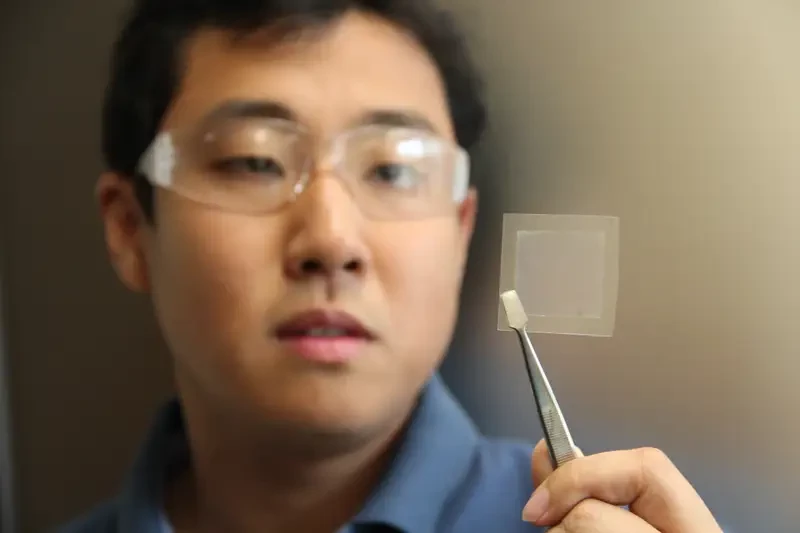 Source: CSIRO
Source: CSIRO
Despite vibranium having a few properties that are almost impossible to emulate in real life, most experts agree that graphene is a comparable real-life counterpart. (They are superhero physics experts, by the way). Although graphene may not seem like much, it is the strongest material ever tested.
Because of its distinct atomic structure, physicist and University of Minnesota professor James Kakalios claimed that graphene is "10 times more bulletproof than steel" and nearly invisible in an opinion piece for Wired. The drawback? Graphene is difficult to produce and in limited supply. We have a long way to go before using it to construct trains or airplanes, let alone shields or spears.
#4."Black Panther": Kinetic energy storage and distribution
 Source: Marvel Studios
Source: Marvel Studios
A well-known comic book superpower that had not yet been explored in the Marvel film series before "Black Panther" is present in both T'Challa's purple Panther Habit and the Golden Jaguar suit: the capacity to store kinetic energy received from blows, bullets, or explosions and expel that energy as necessary in combat.
As a result, the wearer can "charge up" the suit and then turn on the kinetic energy to deliver incredibly powerful subsonic blows while suffering minimal damage. One of the more fantastical technological ideas presented in the movie, this ability depends on vibranium being present in the suits.
Real Life: Energy-absorbing material
 Source: Blue Design Limited
Source: Blue Design Limited
This one is particularly challenging to reproduce in reality because the idea of kinetic energy storage itself is in conflict with the laws of physics. A body in space only has kinetic energy if it is in motion, according to the editors of Encyclopaedia Britannica, which means that it cannot be stopped in place or stored inside of a container for later use, much less inside of a thin layer of clothing.
A Google patents search revealed there are a few sportswear manufacturers operating on this technology. Still, a patent does not guarantee that this technology will be sold in sportswear stores any time soon (companies frequently patent ideas that are never implemented), but in the interim, we can continue to be impressed by the creative design of the "Black Panther" suit in the meantime.
#5. "Black Panther": Holograms
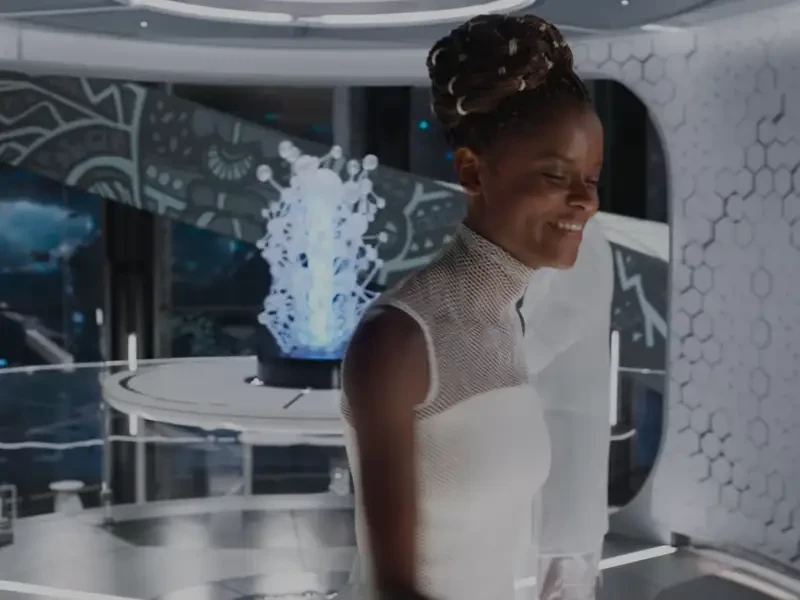 Source: Marvel Studios
Source: Marvel Studios
Holograms can be seen in the film in a variety of settings. Thanks to wearable technology inspired by African jewelry, Shuri's lab has a few holographic displays like the one shown, and other characters use live-feed holograms in place of phone calls.
The holograms in the film have the same clarity as FaceTime on an iPhone and move like a more modernized version of Princess Leia's iconic hologram from "Star Wars Episode VI: A New Hope," the hologram that is famous for saying, "Help me, Obi-Wan Kenobi, you're our only hope."
Real Life: Early-stage holographics
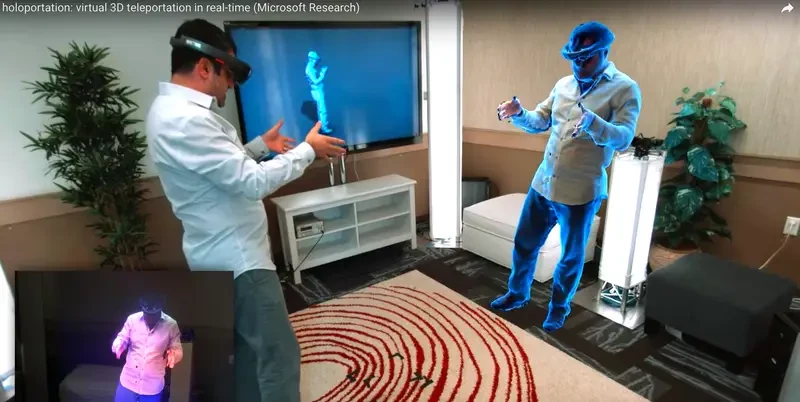 Source: Microsoft
Source: Microsoft
The surprise appearance of late rapper Tupac Shakur at Coachella in 2012 may have been the most well-known and impressive use of holographic technology, but it wasn't a hologram. The performance was actually a CGI projection that was reflected off of glass using a technique from the 19th century known as "Pepper's Ghost." Real holograms of today are much less impressive than those from Coachella or Wakanda.
Even the most advanced technology cannot compare to the size and quality of Leia's letter to Obi-Wan. Unfortunately, it will be years, if not decades, before this technology is commercially available, let alone integrated into bracelets and other wearables like in the movie.
What do you think about the tech in the movie and real life? Tell us your thoughts in the comments!